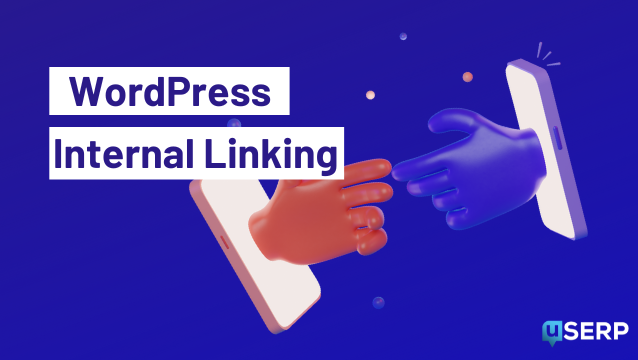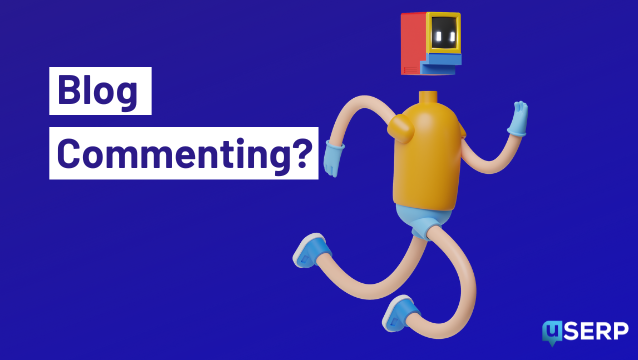What are the best types of marketing content you can use to benefit your business? Unfortunately, there’s no straight answer to that question.
Sure, consumer behavior research reveals that some formats perform better than others. But the best types of content to add to your content marketing strategy must deliver value to your customers. Moreover, they must help your marketing team reach its goals.
Are you looking for tips on choosing content formats that will propel your brand forward? This article offers evidence-based insight into the most valuable types of marketing content.
Read on to learn more about using content to enhance your marketing strategy.
High-quality blog posts
To this day, blog posts remain one of the most popular types of marketing content. And that’s not much of a surprise. According to research, 60% of internet users read blog posts at least once per week.
But the popularity of blog posts among consumers isn’t the only reason to invest in this content format.
The main benefit of blogging is that it can allow your content marketing team to present your target audience with well-researched, original, and insightful information that helps solve their pain points. Remember that one of the primary reasons 59.2% of people go online is to find information.
In the competitive landscape of content creation, the significance of blogging becomes even more apparent when you consider the value of expertise. A well-curated blog not only serves as a valuable resource for your audience but also positions your brand as an authority in your industry. When crafting content, it’s crucial to entrust the task to a skilled and knowledgeable individual. A more qualified person, armed with deep insights and thorough research, can effectively address the informational needs of your audience.
By producing high-quality blog posts, you can reach several goals:
- Well-written, information-dense blogs benefit readers. They increase their likelihood of returning to your site.
- High-quality blog posts position your brand as credible and trustworthy. (This is key to improving sales).
- Long-form blog posts covering a topic in detail perform better among readers. They also receive more backlinks.
But how do you get the most out of this content format?
Well, the best thing you can do is start with research.
Identify the keywords your target audience is searching for.
Learn about your potential customers’ pain points.
And do your best to compose unique, engaging blog posts. They’ll attract readers and convince them to stick around on your site.
For a great example, check out Deel’s Guide to the High Potential Individual Visa (HPI) in the UK article.
You’ll see that the resource is chock-full of relevant information. The info is presented in a reader-friendly way, and the formatting supports skimming. Web visitors can jump to the parts of the article most relevant to their specific needs.
Source: deel.com
If you’re already getting great results from publishing blogs, take things further.
Invest your content marketing resources in producing original research reports or white papers. For example, check out the one from ZAG below.
These will highlight your brand’s credibility and expertise. Plus, they’re amazing lead magnets. They’ll help you transform blog posts into a key part of your sales funnel.
Source: zaginteractive.com
Content centered around trending topics
Have you covered the basics of blogging? If yes, it’s time to move on to creating ephemeral types of marketing content.
Trends come and go. So, they’re not always the best way to improve your ROI.
Nonetheless, producing content around trending topics can help attract new leads. And, if your post goes viral, it can put your business on the map.
Of course, to see results from this type of marketing content, get ready to do a lot of research. And if you’re aiming for Instagram growth, stay updated on trending hashtags and content styles to connect with a larger audience.
Targeting trending keywords or using the latest Instagram filter won’t be enough.
Instead, to produce great trending content, you must understand why the subject matter is relevant to your audience and communicate it effectively through your brand voice. Moreover, you must find ways to give the post your unique stamp.
For example, when ChatGPT emerged in November 2022, every publication wrote about it. As did brands trying to profit from the hype.
But, instead of mindlessly jumping on the trend, SaaS brand Aura chose to do its research. Aura created AI-related content that would genuinely benefit its users.
In the How to Optimize Amazon Listings with ChatGPT, the brand doesn’t just make generalized claims. Instead, the writers did a deep dive into researching and testing ChatGPT prompts that would deliver satisfactory results. Seeing that this is one of the few articles on the internet that takes such a deep dive into the trending topic, it’s no surprise that it ranks third on Google.
Source: goaura.com
Screenshot provided by Author
Short-form video
According to the latest statistics, most marketers use video in 2023. And considering the outcomes, that’s no surprise. According to Wyzowl, video has helped 85% or more brands:
- Increase user understanding of their products.
- Boost brand awareness.
- Improve website traffic.
- Generate leads.
- Increase sales.
- Improve website dwell time.
With this in mind, it’s easy to see why investing in the format is worth the cost.
But what’s the best way to get the biggest bang for your buck when producing and publishing videos?
If you’re interested in utilizing this type of marketing content, start with short-form videos.
Because of the short run-time, short-form video is accessible, engaging, and often sufficient to grab your target audience’s attention. Additionally, it can improve your on-page SEO, giving you a better chance of attracting more leads. And it’s a great way to introduce complex solutions to a non-expert audience.
Consider TikTok, Instagram Reels, and YouTube Shorts. Alternatively, invest in producing product explainers for your homepage. (Short explainer videos are especially valuable if you offer somewhat complex products.)
For example, if you check out the How Do Our Medical Alert Systems Work page on Bay Alarm Medical, you’ll see that the brand uses videos in several spots throughout the homepage.
The helpful How It Works section introduces the concept of an alert system to the brand’s audience. And the Listen to Real Calls part of the webpage provides visitors with unique social proof.
Source: bayalarmmedical.com
Long-form videos
Do you have the resources to produce long-form videos? In that case, they could be one of the best types of marketing content to engage younger audiences. All you need is to create compelling content for your videos and use a reliable video hosting platform to reach and resonate with younger audiences who are increasingly drawn to video content.
According to Google, Gen Zers, in particular, are prepared to watch long-form content if it addresses topics they feel passionate about.
For instance, gameplay walkthroughs for newly released titles — like the latest Sims 4 expansion pack — often rake in hundreds of thousands of views in a matter of days.
Source: youtube.com
The same goes for video essays on trending topics like celebrity drama, TV shows, skincare, and fashion.
Recently, the fourth and final season of the show Succession launched the fashion world into an obsession with the “quiet luxury” or “stealth wealth” look. And unsurprisingly, people were happy to immerse themselves in long-form videos exploring the trend and teaching them how to emulate the same style as some of their favorite TV characters.
So, how do you get exceptional results by investing in long-form videos?
Follow the same rules as when producing long-form written content. Prioritize viewer value over length.
Do thorough research and present your audience with insightful and unique information.
And don’t allow yourself to do all that work without getting the most out of your investment. Longer formats naturally lend themselves to repurposing. So make sure you use the most engaging parts of your videos as teasers to get social followers to interact with your brand. Additionally, it is also advised to use a video compressor to further optimize your videos for SEO.
Case studies and UGC
Social proof is an irreplaceable part of the buyer’s journey. Data shows that most consumers read reviews before making a buying decision. In fact, according to PowerReviews, 99.75% of people read reviews at least sometimes. And 91% do so regularly.
With this consumer behavior trend in mind, it should be a no-brainer for you to utilize social proof-based types of marketing content like reviews, stats, case studies, and user-generated content (UGC). For example, you could write a case study about how 3PL for supply chain efficiency helped you to improve your shipping process and reduce customer complaints. You could also share customer reviews that highlight your fast and reliable shipping. This type of social proof can help to build trust with potential customers and increase sales.
Social proof is crucial for building trust with potential customers and increasing sales. One way to establish social proof is to use genuine testimonials from customers. These are real endorsements from people who have used your products or services and had a positive experience. When potential customers see testimonials from other people like them, they are more likely to trust your brand and be willing to make a purchase.
As you identify the web pages you wish to optimize, consider whether they could benefit from social proof to show your audience that they can trust your brand.
For example, the Collibra website includes a detailed case study in the first screenful of the homepage.
The brand emphasizes that its solution helps huge businesses like Heineken achieve impressive results. Even more, Collibra does this in an engaging, visually pleasing video format. It thus helps potential customers understand the benefits they could unlock by subscribing.
Source: collibra.com
If you want to ensure that the social proof you use exudes authenticity, the best format for you will be user-generated content.
UGC is extremely powerful in bringing a brand closer to its audience. First and foremost, it exhibits trust in your product or service. People are naturally more perceptive to hearing what their peers think of your product than you, the company behind it. After all, customers similar to them have no ax to grind, and they likely have shared tastes and pain points.
UGC also helps foster a sense of community around your brand. It’s an excellent way for you to facilitate conversations and have people gather around a common interest — your product and brand.
According to an April 2023 survey conducted by Entribe:
- 86% of consumers trust brands that opt for UGC over influencer marketing.
- 90% of people prefer seeing content from a brand’s real-life customers.
- 83% are more likely to buy from brands that share UGC.
Now, there are a lot of great examples of major brands with millions of followers harnessing the power of UGC. (Think Coca-Cola.) One lesser-known brand that uses a lot of UGC in many of its marketing campaigns is Native Union.
By reposting customer-made content, Native Union proves to potential buyers that they are guaranteed to enjoy the products. More importantly, UGC also allows the business to encourage customer engagement. After all, most young consumers enjoy having their posts shared by the brands they love.
Source: instagram.com
Charts, quizzes, and other interactive types of marketing content
The engagement rate is one of the best indicators of whether your marketing strategies are working. In fact, the SemRush State of Content Marketing Report for 2023 revealed that as many as 23% of marketers wanted to focus on improving engagement through content.
And what better way to encourage web visitors to engage with your content than to make it interactive?
By investing a portion of your budget into interactive resources — charts, quizzes, training guides, or more elaborate marketing content — you can encourage your audience to immerse themselves in your site. You can also consider more unusual content types and, for example, create flipbook.
For instance, if you check out the MarketBeat DOW 30 Stocks page, you’ll notice that it includes an interactive chart.
The resource does a great job of presenting visitors with easy-to-read information on high-trading volume stocks like Maverick trading can provide. But the value of this type of marketing content is that it allows the brand’s customers to filter results based on personalized preferences like sectors, market caps, and media sentiments.
Source: marketbeat.com
Or, for an even more elaborate example of interactive content, check out Going’s Cheap Fights page. In addition to the sales-oriented content one would expect from a landing page, this resource also includes an interactive search bar.
Thanks to the feature, visitors can search for affordable flights from their airport of choice. And the great thing is that the content they receive is a hyper-relevant example of what they will receive once they sign up for Going’s service.
Source: going.com
Sales-driving content
One of the more commonly overlooked types of marketing content for ecommerce businesses is that which supports sales pages.
Yes, a well-designed product page should do the trick in convincing your customers to convert. However, it never hurts to enhance the effectiveness of your website design and copy with resources aimed at nudging consumers toward making a purchase decision.
Consider hiring web designers or leveraging professional design services to ensure your online presence is not only visually appealing but also optimized for conversions.
For example, knowing that one of the primary conversion obstacles in the health and fitness industry is a lack of trust, brands like Transparent Labs have started improving their sales pages with information regarding the safety of their products.
On the Creatine HMB product page, you can see several trust signals. They show that the supplement doesn’t contain artificial sweeteners, gluten, artificial coloring, GMOs, or preservatives.
And it doesn’t stop there. The brand also presents content that addresses the benefits of each of the ingredients in the product. The claims are further backed up by links to scientific studies. These are more than enough to convince the audience to purchase.
Source: transparentlabs.com
Another way to use tiny bits of content to support sales is by enhancing your product listings with critical product attributes. These give consumers optimal conditions to evaluate your offer before choosing what items to further explore.
On the Shop Solar Kits Emergency Solar Power Kits page, the brand uses all the available space to present decision-impacting content to describe the benefits of each kit. You can see that each listing includes a price, a rating, and a detailed listing name. There’s also a short description of what kind of use the package is suitable for.
Source: shopsolarkits.com
Email newsletters
Last but not least, if you’re exploring the best types of marketing content you need in your strategy, don’t forget about email newsletters.
Though they may not be as trendy or exciting as other formats, emails are super effective.
The Mailmodo State of Email 2023 report discovered that email was a high-performing channel for 78.29% of marketers. It beat organic search, paid search, and social media ads.
Moreover, remember that email subscribers are already interested in your brand’s offer. Newsletters are an excellent format to keep them invested in your brand. These emails can get them to explore your original content. And they can provide incentives (like discount codes or exclusive sales) to explore your offer.
The Netflix Lookahead newsletter is an excellent example of how a brand can use email to get customers excited about new products.
Screenshot provided by author
But, of course, newsletters can also be a fantastic method of content distribution. They allow you to send your subscribers an automatic email every time you publish a new post or video. Plus, they can be an excellent tool to use to support all your content production efforts.
In closing
When choosing the types of marketing content to add to your strategy, your best bet is to opt for the formats that will allow you to deliver the most value.
Cover your bases with well-researched blogs, videos, social proof, and sales-supporting content. Then, you can move on to more experimental formats.
You may find exciting types of content, like live events and podcasts, resonate well with your audience. Or, it may turn out that they don’t deliver the engagement rates you’re after.
But, no matter what you do or how prepared you are to experiment, remember to always put your customers’ interests first. And invest in content that reflects your brand’s identity. That way, it will appeal to the people you want to attract and help them perceive your business for what it is and what it can offer.
- SEO and Content Marketing: How to Optimize for Your Audience and Search Engines - November 21, 2023
- 8 Types of Marketing Content You Should Add to Your Strategy + 13 Great Examples - September 5, 2023








